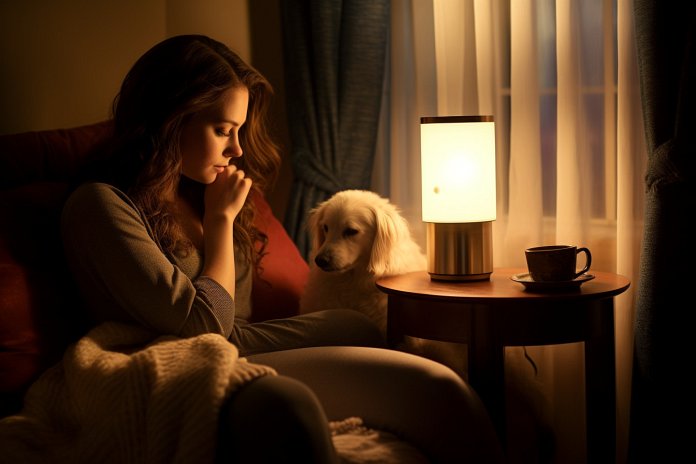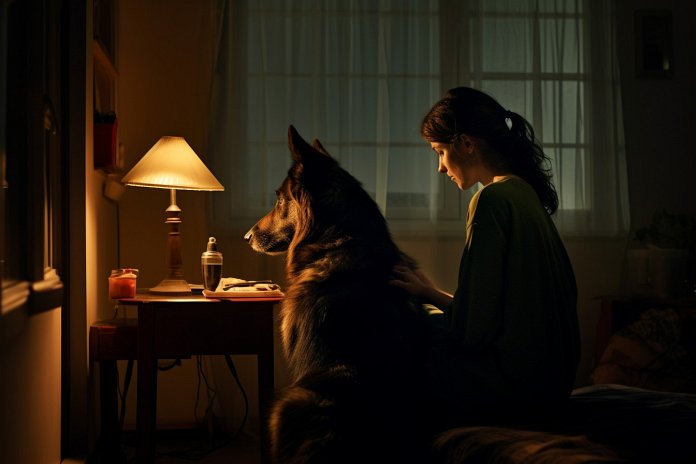
When it comes to dog vision, we are often curious about what dogs can see. Can they see colors? Can they see in the dark? In this article, we will explore the science behind dogs’ ability to see in the dark and why it is important for them.
Dogs Can See in the Dark
Contrary to popular belief, dogs can actually see quite well in the dark. While not as well as cats, they have better night vision than humans. You may have noticed that your dog can navigate through a dark room without any problems, avoiding obstacles and appearing focused on something. This is because dogs have the ability to see in low-light situations.
Signs That Dogs Can See in the Dark
If you observe your dog staring, barking, or wagging its tail in a dark room, it is a good indication that they are seeing something even in the darkness. Pay attention to your dog’s body language, as it can provide further clues. They may appear alert, pacing, or exhibiting other signs of heightened awareness.
History and Importance
Dogs have evolved to be able to see in the dark because it was vital for their survival in the wild. Being able to see in low-light conditions allowed them to escape from predators and navigate through their surroundings. Additionally, dogs are den-dwelling animals, so they need to be able to see in order to build a safe home for themselves and their young.
Science Behind Dogs’ Night Vision
Dogs have larger pupils than humans, allowing more light to enter their retinas. They also have more light-sensitive cells called rods in their retinas, which help them see better in low light. Dogs also have a higher Flicker Fusion Frequency (FFF) than humans, meaning they can perceive light as a constant source at higher frequencies. The tapetum lucidum, a reflective layer in their eyes, acts like a mirror and enhances their ability to register light in the dark.
Dealing With Your Dog’s Night Vision
Knowing that your dog can see in the dark, it is important to make their environment safe and comfortable. Keep the room clean and tidy, as a cluttered space can make it difficult for them to navigate. Be aware that dogs may struggle to see certain colors, so try to keep objects off the floor that could trip or injure them.
Conclusion
Dogs have the ability to see in the dark, although not as well as cats. Understanding how dogs see in low-light conditions can help you provide a safe and comfortable environment for your furry friend.
Dogs have the ability to see in the dark, thanks to their larger pupils, more rods in their retinas, and the tapetum lucidum.

Tips & Things to Know
1️⃣ Dogs can see in the dark: Contrary to popular belief, dogs have the ability to see in the dark. While they may not have perfect vision in low-light situations, they are better equipped than humans and can navigate through dark rooms without bumping into objects.
2️⃣ Look out for signs: If you notice your dog staring, barking, wagging its tail, or appearing alert in a dark room, it is a good indication that they are seeing something. Pay attention to their body language and subtle signs that they are looking at things in the darkness.
3️⃣ Create a safe environment: Dogs may have difficulty differentiating between colors in the dark, so it is important to keep their surroundings clean and tidy. Avoid placing objects that could trip or injure them on the floor. Be considerate of their limited color vision and try to make their environment as safe as possible.
Frequently Asked Questions, Answered ✅
1. Can dogs see in the dark?
Yes, dogs can see in the dark, although not as well as cats. They have the ability to navigate through dark rooms without bumping into objects.
2. How do dogs see in the dark?
Dogs have larger pupils than humans, allowing more light to enter their retinas. They also have more light-sensitive cells called rods, which help them see better in low-light situations. Additionally, dogs have a higher Flicker Fusion Frequency (FFF) than humans, meaning they see light as a constant source rather than flickering.
3. What are the signs that dogs can see in a dark room?
Some signs that dogs can see in a dark room include staring, being alert, barking, wagging their tail, and pacing. They may also exhibit behaviors such as steering around furniture, acting no differently than in light, and finding toys with ease.
4. Why is it important for dogs to be able to see in the dark?
In the wild, dogs needed to be able to see in the dark to escape from predators and build dens for their pups. Being able to see in the dark is crucial for their survival and protection.
5. How can we help dogs see in a dark room?
To make it easier for dogs to see in a dark room, it is important to keep the room clean and tidy. Dogs have difficulty differentiating between colors, so removing any potential tripping hazards or objects of specific colors can help ensure their safety.